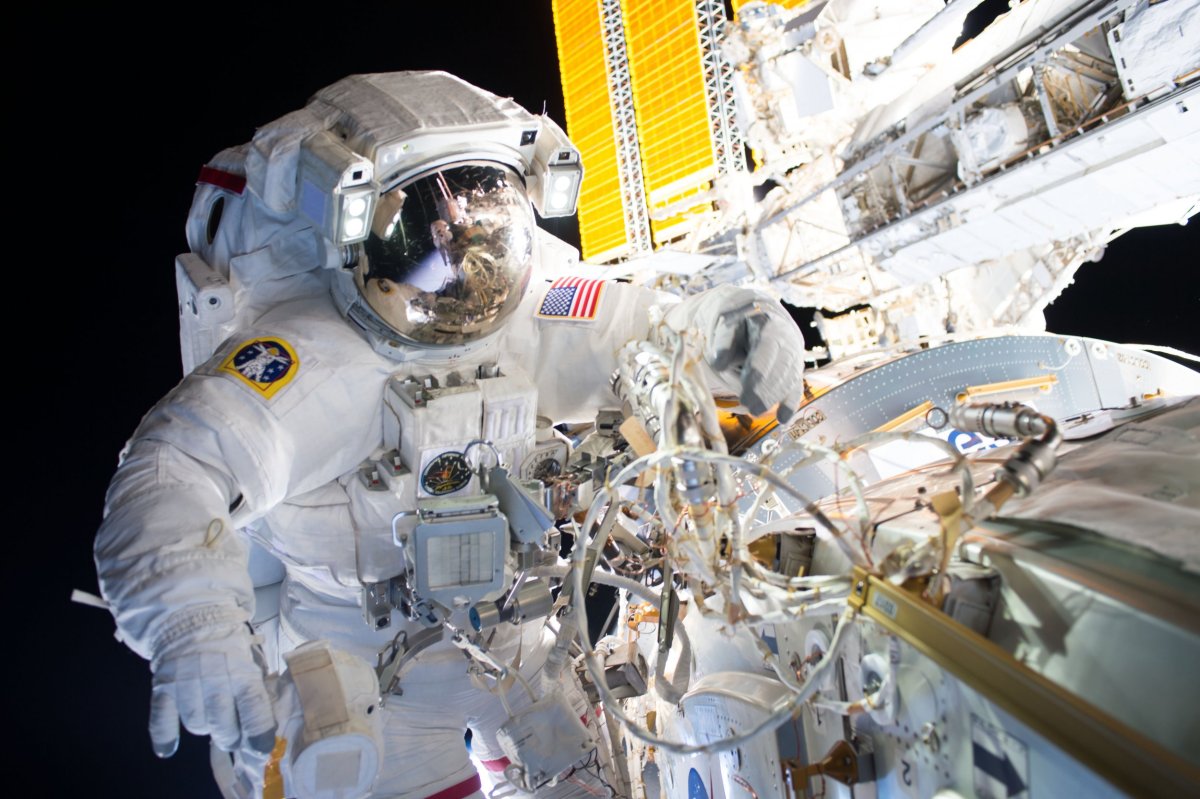
The fear of being lost in space might seem like the stuff of fiction, but its hard to imagine any astronaut without concerns about falling loose on outside expeditions and becoming lost in space. But that fear may soon be a thing of the past.
A "Take Me Home" button recently patented by engineers to be integrated into astronauts' space suits will allow anyone who becomes separated from their Space Station a la Gravity to automatically propel themselves back to safety.
The in-suit system that could send its wearers home at the touch of a button is now in the works, according to Space.com. The new technology, reportedly being developed at Draper Labs, has to be able to pinpoint a "precise location" in a particularly challenging environment: in outer space, there is no GPS. On top of that, the system has to be able to calculate the best route to send an astronaut back to the station, taking into account the time the route takes and how much oxygen an astronaut needs in that amount of time.
"Giving astronauts a sense of direction and orientation in space is a challenge because there is no gravity and no easy way to determine which way is up and down," Kevin Duda, an engineer at Draper, said in the company's press release last week.

According to The Verge, there are already many systems in place on the international Space Station to keep astronauts from drifting out into the abyss during space walks. Astronauts are outfitted with mini jet packs that help propel them back to their stations if they become detached while out in the open. And those jet packs are only used if they become disconnected from the space station, to which they're tethered by cords attached to their space suits.
The patent was just recently filed for this system, so it will take a little longer before this idea becomes a reality. There is also the issue of funding.
"The technology we believe is there to package into a solution," Duda told The Verge. "It's just a matter of commitment from the customer"—in this case, NASA—"to make this a reality."
Even if most incidents like this are the stuff of fiction, it makes a lot of intuitive sense to be safe rather than sorry for the future's sake. And, The Verge argues, something like this would have come in handy in 2013 during the "scariest wardrobe malfunction in history, " in which astronaut Luca Parmitano's helmet began to fill with water while he was on a mission outside of the international space station.
Uncommon Knowledge
Newsweek is committed to challenging conventional wisdom and finding connections in the search for common ground.
Newsweek is committed to challenging conventional wisdom and finding connections in the search for common ground.
About the writer
Joseph Frankel is a science and health writer at Newsweek. He has previously worked for The Atlantic and WNYC.
To read how Newsweek uses AI as a newsroom tool, Click here.








